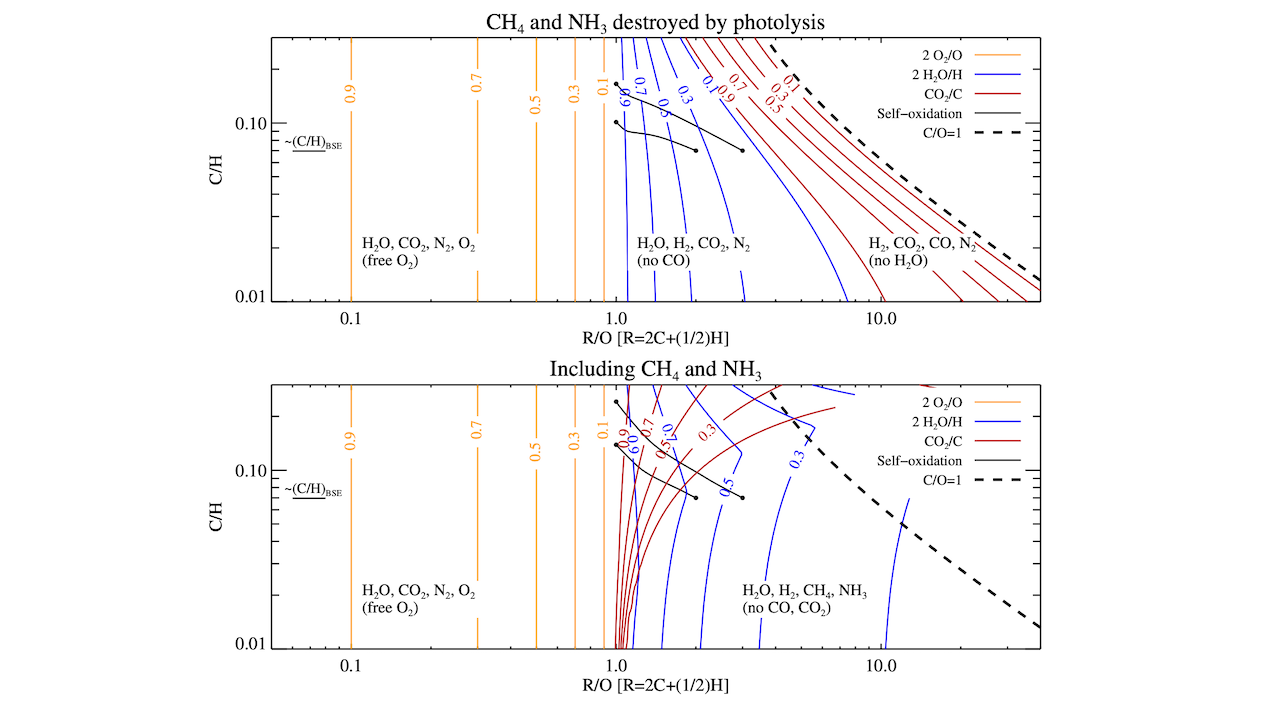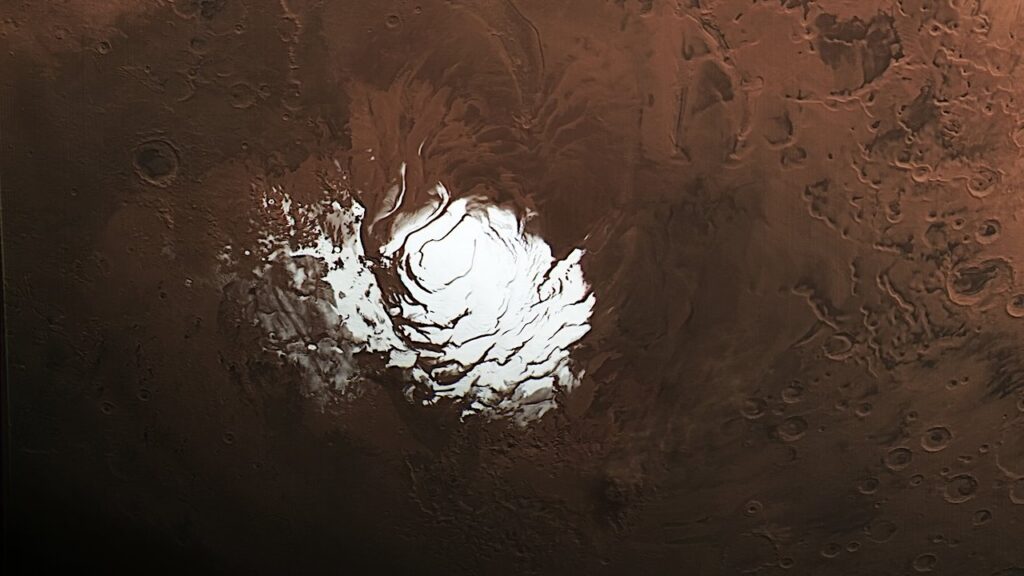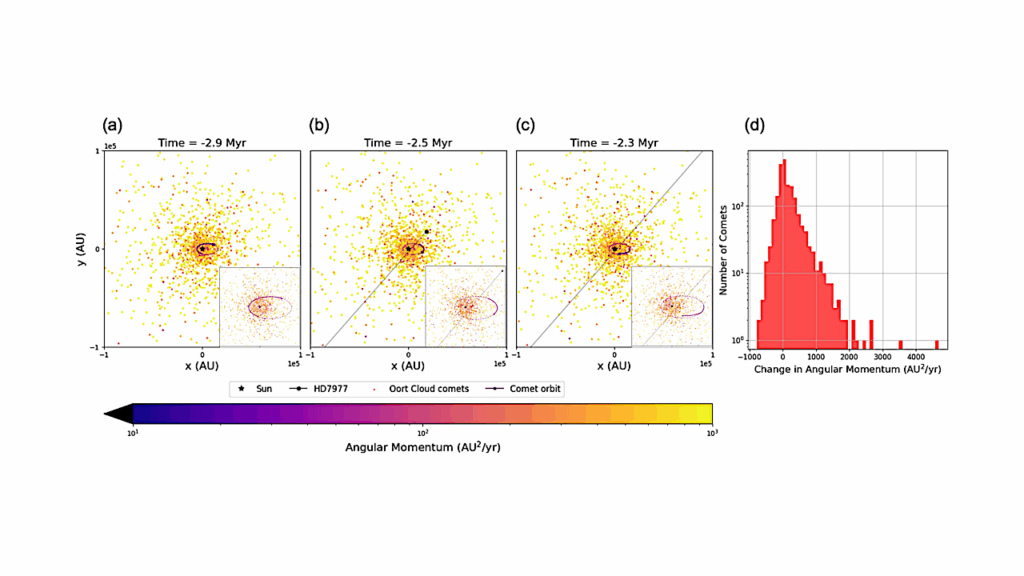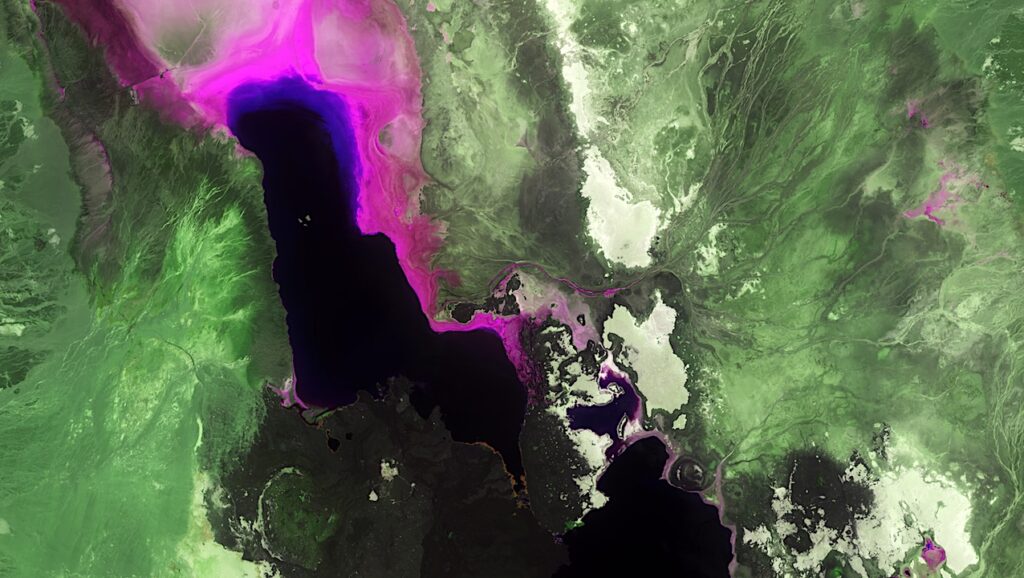Self-oxidation of the Atmospheres of Rocky Planets with Implications for the Origin of Life

Rocky planets may acquire a primordial atmosphere by outgassing of volatiles from their magma ocean. The distribution of O between H2O, CO and CO2 in chemical equilibrium subsequently changes significantly with decreasing temperature.
We explore here two chemical models: one where CH4 and NH3 are assumed to be irrevocably destroyed by photolysis, and one where these molecules persist. In the first case, we show that CO cannot co-exist with H2O, since CO oxidizes at low temperatures to form CO2 and H2.
In both cases, H escapes from the thermosphere within a few ten million years by absorption of stellar XUV radiation. This escape drives an atmospheric self-oxidation process whereby rocky planet atmospheres become dominated by CO2 and H2O, regardless of their initial oxidation state at outgassing. HCN is considered a potential precursor of prebiotic compounds and RNA.
Our oxidizing atmospheres are inefficient at producing HCN by lightning. Instead, we demonstrate that lightning-produced NO, which dissolves as nitrate in the oceans, and interplanetary dust particles may be the main sources of fixed nitrogen to emerging biospheres.
Our results highlight the need for origin-of-life scenarios where the first metabolism fixes its C from CO2, rather than from HCN and CO.
Anders Johansen (University of Copenhagen), Eloi Camprubi (University of Texas Rio Grande Valley), Elishevah van Kooten (University of Copenhagen), Jens Hoeijmakers (Lund University)
Comments: Accepted for publication in Astrobiology
Subjects: Earth and Planetary Astrophysics (astro-ph.EP)
Cite as: arXiv:2409.11070 [astro-ph.EP] (or arXiv:2409.11070v1 [astro-ph.EP] for this version)
https://doi.org/10.48550/arXiv.2409.11070
Focus to learn more
Submission history
From: Anders Johansen
[v1] Tue, 17 Sep 2024 10:50:37 UTC (1,135 KB)
https://arxiv.org/abs/2409.11070
Astrobiology,








